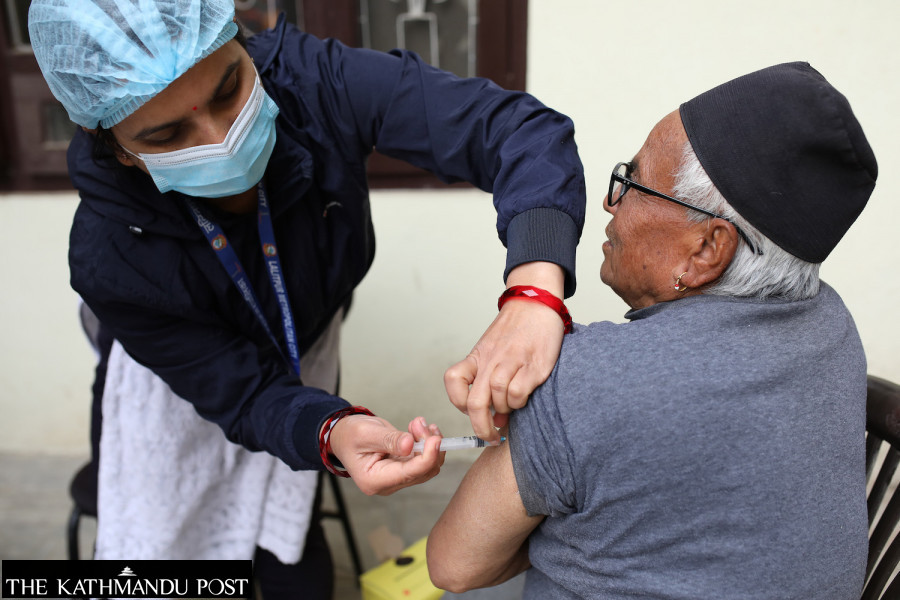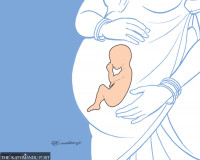Health
Nepal’s Vero Cell stock not enough for second doses and boosters
Officials say they have less than 700,000 doses of the Chinese vaccine, and the number of people needing the second shot is too high.
Arjun Poudel
The government has run out of its stock of Vero Cell vaccines, which could deprive many Nepalis who are waiting for their second dose and those above 60 years of age of the booster shot.
“We have 668,117 doses of Vero Cell vaccine in stock throughout the country,” said an official at the Ministry of Health and Population. “But the number of people who have taken the first dose of the vaccine is far more than the doses we have in stock.”
The Ministry of Health and Population was planning to start booster shots to elderly people from Thursday.
There’s no immediate plan to buy additional doses of Vero Cell. There are no shipments of the Chinese vaccine (Vero Cell) in donations in near future.
People administered with the Vero Cell vaccine need to receive a second dose after four weeks. It is believed that thousands of people, who were administered with Vero Cell vaccine some four weeks ago, have been deprived of the second dose due to the lack of the vaccine at all immunisation centres.
Officials at the Ministry of Health and Population say the current stock of less than 700,000 doses is not sufficient for second doses.
“Yes, we have a limited stock of Vero Cell vaccine and the demand of Vero Cell vaccine has risen many fold since the start of the pandemic,” Dr Surendra Chaurasia, chief of Logistic Management Section under the Department of Health Services, told the Post.
Chaurasia admitted that no process has been started yet to secure the Vero Cell vaccine.
Nepal has so far received 19,736,400 doses of the Chinese Vero Cell vaccine.
Of them 9,746,270 doses have been administered as first doses; 7,821,406 doses as second doses and 64, 406 doses have been given as booster shots as of now.
Of the total Vero Cell vaccine doses Nepal received, the government purchased 10 million doses through a non-disclosure agreement from the vaccine manufacturer Sinopharm. The consignments arrived on various dates. An additional 5,936,400 doses were bought through COVAX’s cost-sharing scheme.
China has donated 3.8 million doses of Vero Cell so far.
Officials at the Department of Health Services say many people may have taken the Vero Cell vaccine saying it was their first dose so as to get the booster. They, however, admitted that it was just their assumption.
According to them, since booster shots were not rolled out and the threat of the virus was growing after Omicron made its foray into Nepal, the number of people pretending to be taking their first dose could have taken the third or booster dose.
“If they indeed have taken their booster shots, they will definitely not come to take the fourth shot,” said Chaurasia, adding that there may not be a problem even as the vaccine stock has depleted. “Saying that they were getting vaccinated for the first time, many could have taken the booster, and this is our understanding.”
Asked what if people had indeed taken the vaccine for the first time, Chaurasia said that people did not seek vaccination despite requests for months and there might be some mystery in the rise in the demand for the Vero Cell vaccine all of a sudden.
Officials have been also mulling over administering a different vaccine as the second dose and claimed that it is in line with the World Health Organisation’s recommendation.
Scientists around the world have been discussing vaccine cocktails and trying to figure out the best mix and match for better protection against the coronavirus.
Administering a different Covid-19 vaccine after a single dose of the AstraZeneca or Pfizer-BioNTech vaccine is safe and effective and could boost the immune response, a study of 1,000 volunteers has found, according to a report published on December 7 in the British Medical Journal.
The results, reported in the medical journal Lancet, showed that having a dose of the Moderna vaccine after an initial AstraZeneca or Pfizer dose induced a higher binding and neutralising antibody response than seen after two doses of either AstraZeneca or Pfizer.
Studies have shown that people who receive two different Covid-19 vaccines generate potent immune responses, with side effects no worse than those caused by standard regimens, according to a report published in the science journal Nature in October.
But now, for the first time, research has shown that such ‘mix and match’ regimens are highly effective at preventing Covid-19—roughly matching or even exceeding the performance of mRNA vaccines like Pfizer-BioNTech and Moderna.
Even as the Omicron threat loomed, Nepal’s vaccination drive failed to pick up pace despite storage facilities brimming with vaccines of various types.
Nepal so far has received 42,048,840 doses of vaccines, including—AstraZeneca, Vero Cell, Moderna, Janssen and Pfizer-BioNTech.
The first consignment of 1,660,800 doses of Moderna vaccine, purchased by the government in August through COVAX’s cost sharing scheme, were delivered on Tuesday.
There were repeated calls from public health experts to boost the vaccination drive and launch booster shots. As the third wave driven by Omicron and Delta hit the country, the government on January 4 started administering booster shots for the frontline workers. The government said people would be given the same vaccine as the booster, which they had received earlier.
But due to mismanagement, many people were already failing to get the boosters.
A frontline worker who spoke on condition of anonymity said last week that he could not get the Vero Cell booster after visiting two vaccination centres in as many days.
Last week, Dr Anup Subedee, an infectious disease physician, pointed out how many people may have failed to get the boosters.
“Yesterday, I reached Teku hospital at around 11am for the booster. [I was] told only after 2pm. I went to Vayodha [Hospital]. After not getting one there, I went to Shahid Smriti [Hospital]. After not getting the vaccine there, I went to Teku again at 2pm, but in vain,” Subedee wrote on Twitter. “Currently I have time in my hand and I have my own vehicle to drive around, so I can keep on visiting the vaccination centres. But how many health workers have this luxury?”
Health authorities say they are currently administering first, second and booster doses to people.
As per the National Immunisation Advisory Committee’s recommendation, the Health Ministry has decided to administer booster shots for those above 60 years of age and those who were vaccinated with Vero Cell.
So far, 13,106,726 people or 43.1 percent of the total population have been fully vaccinated.
According to the Health Ministry, 223,944 people have received booster shots.
The virus cases, meanwhile, have been on the rise.
On Tuesday, 12,008 people tested positive for the coronavirus—9,432 in 18,103 polymerase chain reaction tests and 2,576 in 7,806 antigen tests.
Eight people died of Covid-19 infection throughout the country in the last 24 hours, said the ministry.
The number of active cases across the country stands at 88,934. Of them 87, 117 people are in home isolation.
“Vaccines are the only reliable means to lessen severity and deaths from coronavirus infections,” said Dr Biraj Karmacharya, an epidemiologist. “Authorities concerned can’t afford to fail in vaccinating people and ensuring that there is no shortage of vaccines for first dose, second dose and boosters.”




 6.84°C Kathmandu
6.84°C Kathmandu














